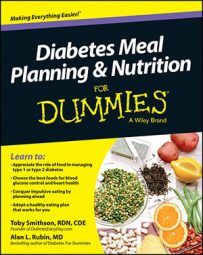Healthy eating to manage blood glucose and the risks for diabetes-related complications requires some thinking and preparation. Fortunately, there are credible resources that can help immensely. A pocket-sized reference book can be your best pal, but other resources work just as well.
Searching websites and apps
It may be debatable whether there is too much information available on the web, and now even on your mobile phone or tablet, but it’s hard to deny that these technologies can be very handy. An Internet search for “carb counting” returns more than 1 million results, and there are literally hundreds of websites and apps where the nutrition information for specific foods is available.
For individual food items the U.S. Department of Agriculture has a resource with searchable nutrition information on thousands of specific foods. Other nongovernment websites have similar functions, many of which also include commercial raw products and restaurant items. Nutrition apps for mobile devices are plentiful as well, and some will even scan a product’s bar code and display the nutrition facts label.
Be cautious about websites or apps that offer dietary advice, or promote specific diets or products. It’s much better that you learn for yourself what healthy eating and effective diabetes self-management requires. That way, you can take advantage of the valuable information and pass on the advice.
Collecting recipes
Enjoying food is absolutely essential, and if you’re going to eat more often at home so you have better control of your diabetes, you want wonderful recipes to draw from. Of course, with a market exceeding 20 million people in the United States, alone there are many diabetes cookbooks available.
But, you don’t have to get your recipes from diabetes cookbooks when you know what to eat. All you need are recipes that include nutrition information and serving size (number of serving the recipe yields).
Look for recipes that are relatively low in fat, especially saturated fat, low in sodium, have a generous serving size so you’re satisfied, and don’t send you beyond your meal’s carb recommendations. Search especially for vegetable recipes, like salads or roasted vegetables with spices, so you can really enjoy the food group that should make up the majority of your diet.
Converting recipes
There’s no rule that your collection of recipes that don’t include nutrition information have to go into the trash. You can take advantage of the nutrition resources on the Internet to calculate the nutrition information yourself.
Simply research the nutrition data for each ingredient — calories, total fat, saturated fat, total carbohydrate, fiber, protein, and sodium for a good start — and add it all up. Divide the totals by the number of servings you believe the dish should make, and check the result against what you’ve learned will qualify as a healthy and diabetes-friendly dish.
If one of your old standards doesn’t seem to make the cut (maybe the cup of lard couldn’t pass muster), make appropriate ingredient substitutions.

